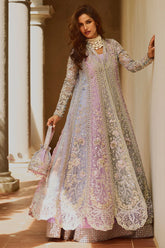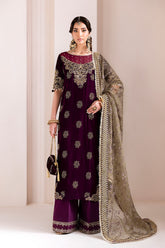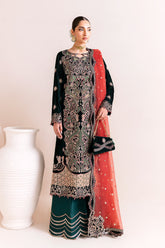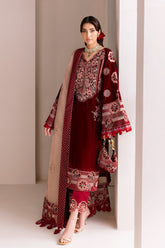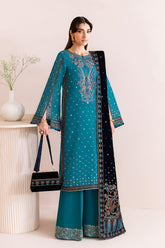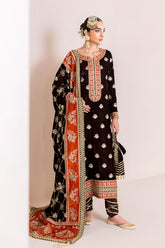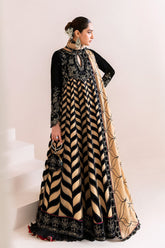How Pakistani Lawn Took Over the World: A Fashion Export Story
Once considered a seasonal staple for Pakistani women during the sweltering summer months, lawn fabric has grown into a global fashion phenomenon. From the bustling streets of Karachi to the posh boutiques of London and the glitzy runways of Dubai, Pakistani lawn is no longer just a fabric—it's a cultural movement, an export powerhouse, and a symbol of style and identity.
So, how did this humble cotton fabric stitched its way into the international fashion scene? Let's unravel the story.
A Fabric Rooted in Heritage:
Lawn, a lightweight, breathable cotton fabric, has been around for centuries. Originating in France in the 18th century, it found its true renaissance in South Asia, especially in Pakistan. With the region’s hot climate and a rich tradition of textile craftsmanship, lawn quickly became a favorite among local women seeking comfort and elegance during summer.
But Pakistani lawn isn’t just about comfort. It’s a creative canvas. Designers began using it to display intricate prints, digital designs, and embroidery that reflected Pakistan’s artistic traditions, from Mughal miniatures to truck art. The result? A fabric that feels luxurious, looks stunning, and tells a story. This narrative extends to replica lawn collections, which offer affordable alternatives to high-end designer pieces.
The Designer Revolution:
The transformation of lawn from everyday wear to a fashion statement started in the early 2000s. Designers like Sana Safinaz, Elan, Gul Ahmed, and Khaadi led the way. They brought high fashion into lawn collections—think luxe photo shoots, branded campaigns, celebrity endorsements, and limited-edition releases.
Lawn became more than just clothing; it became an experience. Each year, "lawn season" in Pakistan turns into a fashion frenzy. Pre-bookings, launch events, long lines, and social media debates over which designer did it best—it all became part of the hype. A significant contributor to this excitement is the surge in demand for Maria B replica lawn collections.
This designer revolution didn’t just elevate the product; it built brand loyalty, created a fashion ecosystem, and pushed the export potential to the next level.

Diaspora Demand:
One of the key reasons Pakistani lawn crossed borders is the Pakistani diaspora. Whether in the UK, Canada, UAE, or the US, Pakistani expats missed their homeland—and lawn became a nostalgic and stylish connection.
Boutiques catering to South Asian fashion in places like Birmingham, Toronto, and Dubai began stocking lawn suits during the spring and summer months. Online platforms like Studio by TCS, Sanaulla, and Salai helped global customers order their favorite brands like Hussain Rehar clothing with a click.
Interestingly, many diaspora customers don’t just buy lawn for its style or roots—they buy it for its versatility. It’s perfect for summer Eid gatherings, casual dinners, or even workwear when styled right. And with stitched and unstitched options available, it caters to both traditional and contemporary tastes.
Instagram, Influencers, and the Digital Boom:
Social media played a massive role in lawn’s international success. Pakistani fashion influencers began styling and showcasing lawn like never before. Lawn wasn’t just being worn to dinner parties—it was appearing at beachside photo shoots, travel diaries, and even fusion weddings.
Brands tapped into this digital boom. Instagram drops, influencer partnerships, and sleek online stores brought Pakistani lawn into the same arena as global fashion labels. Today, you’ll see women in London pairing lawn kurtas with jeans or wearing lawn tunics with luxury bags—a cultural crossover in full swing.
Beyond Borders: The Global Fashion Industry Notices
In recent years, international designers and fashion observers have started to pay attention. Pakistani lawn is now being appreciated for its intricate design, quality of fabric, and unique storytelling. Fashion exhibitions in Paris and Milan have featured Pakistani textile art. Some designers are collaborating with international textile firms, and there’s growing interest in sustainable fashion circles due to lawn’s cotton-based, eco-friendly nature.
Moreover, South Asian representation in global media has helped lawn gain mainstream visibility. With shows, films, and celebrities celebrating their South Asian roots more openly, Pakistani fashion is getting its moment in the spotlight.
Challenges and the Road Ahead:
Despite its global success, the lawn industry faces some hurdles—rising production costs, fabric copying, and the pressure of staying innovative in a highly competitive market.
Yet, the resilience of Pakistani designers and the loyalty of their global customer base suggest that lawn is here to stay. There's growing talk of expanding into ready-to-wear lines, western silhouettes, and sustainable lawn collections. The potential for Pakistani lawn to become a mainstay in international summer wardrobes is real.
Final Thread:
Pakistani lawn’s journey from local staple to global fashion export is more than just a business success story—it’s a celebration of creativity, culture, and community. It's about how a piece of cloth can carry the soul of a nation and stitch together people across continents.
So the next time you see a bold, floral-printed kurta in a café in Toronto or a chic lawn suit on a London street, know that you're witnessing a little piece of Pakistan's fashion story—and it’s only just beginning.



